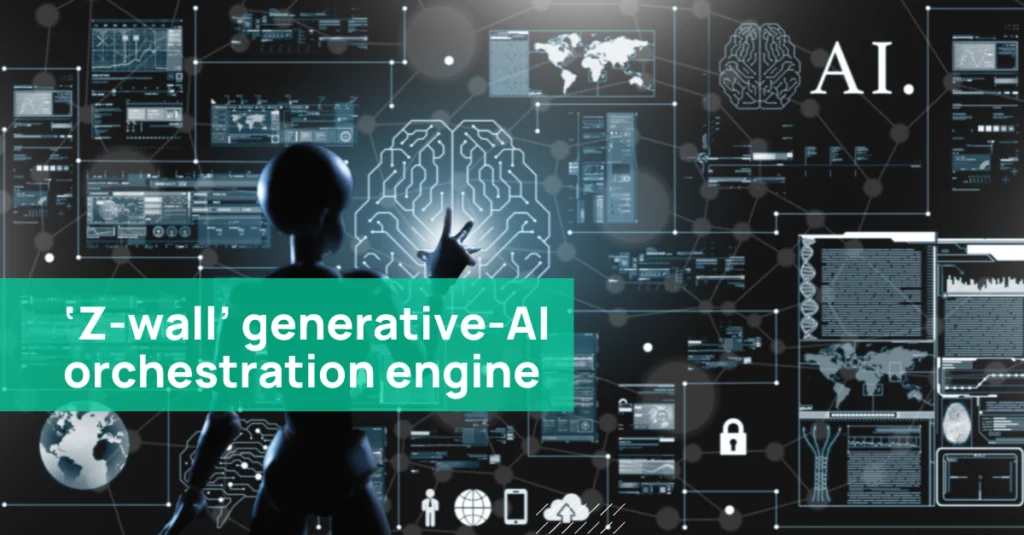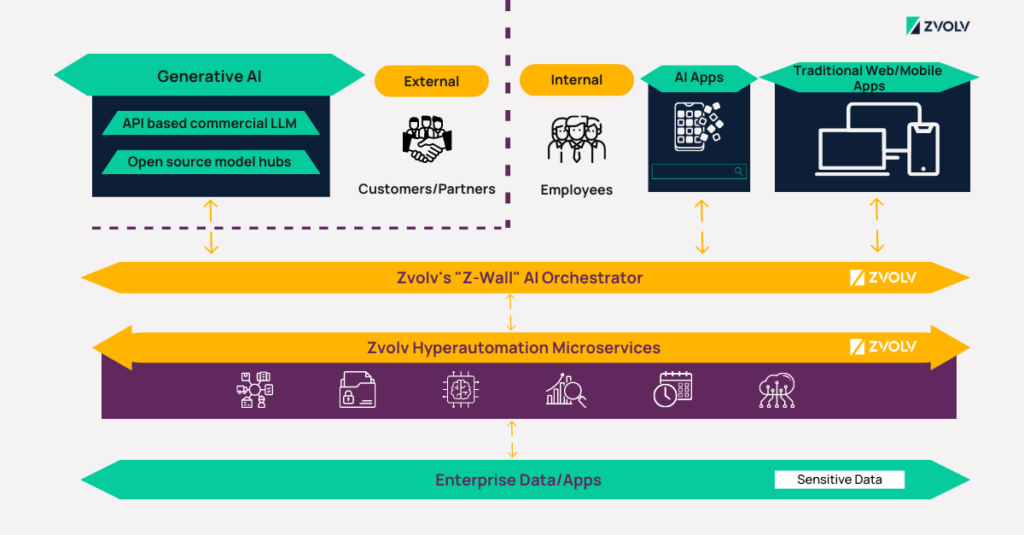
Rise of LCAP and Hyperautomation
The growth of Low Code Application Platforms (LCAP) has been remarkable in recent years, as organizations across various industries have recognized the value and benefits it offers. LCAP makes it possible to create software applications with little to no manual coding. By offering a visual interface and ready-made components that can be quickly put together and customized, it seeks to streamline the application development process. To enable even non-technical people to create applications, minimal code platforms often provide drag-and-drop capabilities, visual modelling tools, and declarative programming.
By requiring less time and effort to develop and deploy applications, low code development shortens the software development lifecycle. It facilitates quicker delivery, iteration, prototyping, as well as simpler maintenance and updates. Instead of writing complex lines of code, developers may concentrate more on business logic and user experience using low code.
Hyperautomation is the act of automating and streamlining business operations throughout an organization using a combination of automation technologies, such as robotic process automation (RPA), artificial intelligence (AI), machine learning (ML), and other cutting-edge tools. By combining human and digital capabilities, it expands on the idea of classical automation in order to achieve greater standards of effectiveness, scalability, and agility.
Hyperautomation strives to automate complex processes that entail decision-making and data analysis as well as repetitive, rule-based operations. Hyperautomation enables the automation of operations that previously required human involvement by fusing RPA with AI and ML. Some of the common use-cases where organizations have utilized LCAP and Hyperautomation are:
- Workflow and Process Automation
- Customer Relationship Management
- Content Management System
- Data Visualization and Reporting
- Supply Chain Management
- Human Resource Management
- Financial and Accounting Systems
- Field Service Management
‘Intent’ – The missing piece of the puzzle
Even with the advent of LCAP platforms, business owners still had to rely on specialists to build their applications. LCAP enabled them to easily provide feedback and suggest changes but the more technical side of an enterprise application development involving integrations, automations and scalability remained under the purview of skilled employees. The process of conveying a business need to a technology team often results in the loss of ‘intent’. To understand this better, let’s take an example of Google search. Simply searching for the word ‘painting’ would show up results associated with what painting is, images, news and articles related to painting. The user may have wanted one of these results, but the search intent was not conveyed here, and the results came out throughout the spectrum of possibilities understood by the search engine.
It is only when a user searches for ‘buy a painting’ that Google knows what is being requested. The results are more focused and are ranked based on authenticity. In enterprises, the ‘intent’ remained to be missing piece of the puzzle which led to a lot of friction internally and with technology partners. This would soon change with the advent of generative AI models.
Generative AI – Public Intelligence
Generative AI models such as conversational AI are trained on a massive amount of text data to understand and generate human-like text responses. Generative AI is designed to have interactive and dynamic conversations with users. It can understand and generate natural language responses, making it suitable for chatbots, virtual assistants, customer support systems, and other conversational applications. Users can interact with Generative AI by providing a prompt or a message, and the model generates a response based on the input and its understanding of the language.
With this innovation, users could communicate with software in a regular human-conversational manner. No longer was there any need to understand or convey intent via custom keywords or phrases. This model made the possibility of enterprises to be able to define, build and maintain their applications directly by the business owners.
Z-wall AI orchestration – Enterprise Intelligence
Zvolv, a leading global LCAP company, became one of the very first platforms to take advantage of generative AI models and successfully launched the Z-wall AI orchestration capability in our annual CXO meet. With the existing hyperautomation capabilities of the Zvolv platform being accentuated by the generative AI model, enterprise leaders’ part of the CXO summit got a peak in the platform’s capability to use generative AI to build modern enterprise applications. The Z-wall AI orchestration allows business owners to converse with the platform in a human-like manner and give instructions to build and manage their applications. The AI model also utilizes advanced analytics and risk assessment to highlight to users if a requirement suggested by them may impact other modules of the application.

Zvolv’s vision for the future is to leverage Generative AI for:
- Allowing users to converse with their data: The advancement in data and data models has led to increased complexity in understanding and deriving business insights which can influence decision making. Data points, their collection and analysis must be done in a methodical manner so that end results are not influenced by any error or oversight. In enterprises, the data analysis is performed by skilled teams which take business requirements and utilize their data science expertise to draw out observations. Zvolv’s vision is to allow business owners to converse directly with data and generate insights in the desired format. Sample prompts which users can provide to converse with data would be:
- Prepare a bar chart to showcase month-on month growth in revenue for the last 3 years
- Change the bar chart to a line graph and limit the x axis to the top 5 performing branches
- Change the pivot of a pie-chart from region to department
- Generate a bar chart of all instances where SLA was breached daily against the departments
- Build apps with more built-in intelligence: Data analytics allows applications to analyze information. However, this needs to be driven by a human to ensure that right sample size is selected, and correct input is provided to the model. The model processes information made available to it as-is and does not offer intelligent suggestions in predicting or highlighting errors in the input. Zvolv aims to bring this functionality as part of the AI orchestration layer, where apps would have built-in intelligence to understand data received as an input and also on data processed by it as an output. The reports generated would offer intelligent suggestions to the reader on how to improve performance while being cognizant of the risks associated with the business.
- Enable citizen developers to build faster: Zvolv Academy trained business technologists take approximately 100 hours to build a traditional enterprise application today. Zvolv aims to bring this down to 10-20 hours by leveraging generative AI model which would act as a copilot to the business technologists. As an example, for building a Store Audit application, business technologists would use generative AI prompts to design their requirements. Some prompts which a user could provide would be:
- Create a Store Master from the file named storemaster.xlsx
- Create members for all emails in the file named users.xlsx
- Create two roles, management and auditor. Add all members to auditor role except for the ones where work location is corporate office.
- Management should have access to information about all stores whereas auditors should only be able to access information related to their region as per the Store Master.
- If any store audit score is found to be below 80%, email a detailed report to the management.
- Create dashboards to display daily progress on audits being undertaken across all sites.
Prompts such as these enable enterprise teams to build, change and manage enterprise applications while accurately conveying their intent. All data related to the application development including the prompts remain as the property of the respective enterprise. Application deployment is automated and can be completed within a matter of a few hours.
In conclusion, the Z-wall AI orchestration allows enterprises to make the next shift in their digital transformation journey and provides a seamless and intuitive experience to all associated stakeholders. Z-wall AI orchestration allows business owners to be in the saddle and drive their campaigns and strategy at industry leading speed and efficiency. The future of AI for enterprises is here!

Simplify Development, Improve Care
Transforming Healthcare with Integrated Digital Solutions
 There is a growing expectation among patients for digital experiences. Healthcare companies are hampered in their efforts to undergo digital transformation by intricate procedures, disjointed legacy technology systems, and security and regulatory issues.
There is a growing expectation among patients for digital experiences. Healthcare companies are hampered in their efforts to undergo digital transformation by intricate procedures, disjointed legacy technology systems, and security and regulatory issues.
 With an enterprise hyper-automation platform that is integrated, simple and user-friendly, Zvolv streamlines the entire application development process. We assist healthcare firms in making the transition from intricate technological projects to a collaborative, agile, and fast-releasing environment.
With an enterprise hyper-automation platform that is integrated, simple and user-friendly, Zvolv streamlines the entire application development process. We assist healthcare firms in making the transition from intricate technological projects to a collaborative, agile, and fast-releasing environment.

Simplify your digital transformation journey. Book a demo to discover how you can deliver a seamless patient experience.

Error: Contact form not found.
Take the next step by streamlining processes and building Governed and Compliant Applications

Optimize clinical workflows:
Ensure timely and accurate access to information at the point of care.

Patient Success:
Enhance patient care, ensure access to care and address patient concerns through digitization.

Boost your Profitability:
Minimize operational expenses, address Medicare reimbursement issues and improve revenue cycle management.

mHealth Applications:
Launch mHealth applications to provide constant access to healthcare services.

Effective Internal Communication:
Facilitate seamless communication among hospital workers, nurses, administrators and clinicians.

Situation Management:
Use real-time data analysis to understand unfolding events and track important metrics every day.
We Understand The Dynamic Nature Of The Retail Industry And The Need For Agile And Efficient Solutions. Why Zvolv?

Tailored for Retail Excellence
Customizable automation solutions designed specifically for your retail needs.

Proven Track Record
Trusted by leading retail brands, we deliver tangible results, optimize processes, and drive growth.

Low-Code, High-Impact
Franchise started generating revenue within 3 months of onboarding.

Scalable Solutions
Scalable solutions that adapt to your retail operations, ensuring future-ready automation.Gulatory.

Real Time Insights
Gain real-time visibility, enabling data-driven decisions.

Enhanced Customer Experience
Elevate customer experiences by optimizing inventory, and improving service quality.
Build custom Healthcare Apps

 Patient Appointment and Scheduling
Patient Appointment and Scheduling
 Clinical Workflow automation
Clinical Workflow automation
 Claims Processing and Billing
Claims Processing and Billing
 Patient outreach and engagement
Patient outreach and engagement
 Compliance and Reporting
Compliance and Reporting
 Hospital Supply Chain Management
Hospital Supply Chain Management
 Patient Appointment and Scheduling
Patient Appointment and Scheduling- Convenient Access: Patients can easily manage their appointments anytime, anywhere, using their preferred device.
- Reduced Wait Times: Reduced Efficient scheduling and automated waitlist management ensure patients receive timely care.
- Reduced No-Shows: Customizable appointment reminders and easy rescheduling options minimize missed appointments.
- Improved Efficiency: Reduce administrative workload allowing professionals to focus on patient care.

 Clinical Workflow automation
Clinical Workflow automation- Streamlined Processes: Automate repetitive tasks and increase efficiency in clinical workflows.
- Productivity Improvement: Clinical staff can dedicate more time to patient care by automating clerical work.
- Personalized Care: Enable clinicians to tailor care plans to individual patient needs.
- Enhanced Coordination: Seamless communication among care teams through automated task assignments and notifications.

 Claims Processing and Billing
Claims Processing and Billing- Reduced Errors: Built in validation checks to minimize errors and improve first-pass claims acceptance.
- Simplified Reconciliation: Streamline remittance processing and automated posting reducing manual effort.
- Decrease Administrative Costs: Eliminate manual tasks, reduce overhead expenses and staff workload through paperless processes.
- Increased Revenue: Minimize denials and underpayments leading to faster reimbursements and improved cash flow.

 Patient outreach and engagement
Patient outreach and engagement- Empowered Health Management: Better health outcomes with personalized health information and reminders.
- Tailored health Education: Knowledge portals with customized educational content and resources.
- Continuous Support: Commitment to patient well-being through ongoing communication, follow-up messages and post-visit surveys.
- Multi-Channel Engagement: Reach patients through multiple secure channels of SMS, email, WhatsApp and in-app messaging.

 Compliance and Reporting
Compliance and Reporting- Regulatory Compliance: Automate compliance monitoring and reduce risk of penalties and audits by adhering to HIPAA and CMS guidelines.
- Streamlined Reporting: Simplify data collection, analysis and submission for quality measures, audits and accreditations.
- Customizable Dashboards: Empower teams to track progress and identify areas of improvement.
- Integrations: Seamless integration with existing systems such as EHR and practice management software to fulfill reporting needs.

 Hospital Supply Chain Management
Hospital Supply Chain Management- Supplies Ordering: Stock up on supplies to keep inventory under control.
- Inventory Management: Maintain an inventory and shelf list of all the medications.
- Real Time Visibility: Comprehensive dashboards on inventory levels, order status and supply chain performance metrics.
- Streamline Procurement: Reduce manual effort and errors through automated purchase orders, vendor management and contract compliance.
Customer Success Story

Leverage the capabilities of low-code automation to do more with less

Error: Contact form not found.